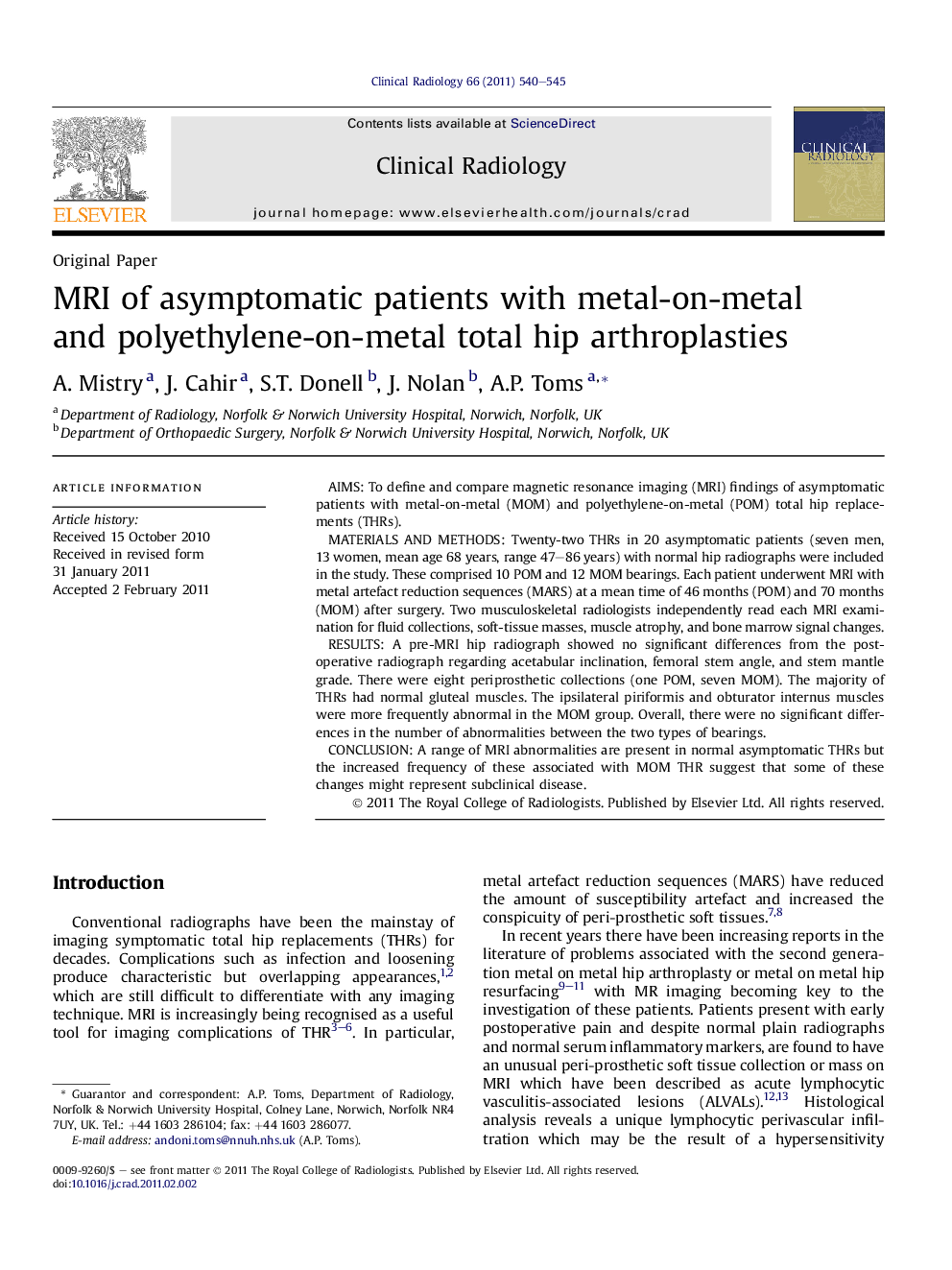| Article ID | Journal | Published Year | Pages | File Type |
|---|---|---|---|---|
| 3981951 | Clinical Radiology | 2011 | 6 Pages |
AimsTo define and compare magnetic resonance imaging (MRI) findings of asymptomatic patients with metal-on-metal (MOM) and polyethylene-on-metal (POM) total hip replacements (THRs).Materials and methodsTwenty-two THRs in 20 asymptomatic patients (seven men, 13 women, mean age 68 years, range 47–86 years) with normal hip radiographs were included in the study. These comprised 10 POM and 12 MOM bearings. Each patient underwent MRI with metal artefact reduction sequences (MARS) at a mean time of 46 months (POM) and 70 months (MOM) after surgery. Two musculoskeletal radiologists independently read each MRI examination for fluid collections, soft-tissue masses, muscle atrophy, and bone marrow signal changes.ResultsA pre-MRI hip radiograph showed no significant differences from the postoperative radiograph regarding acetabular inclination, femoral stem angle, and stem mantle grade. There were eight periprosthetic collections (one POM, seven MOM). The majority of THRs had normal gluteal muscles. The ipsilateral piriformis and obturator internus muscles were more frequently abnormal in the MOM group. Overall, there were no significant differences in the number of abnormalities between the two types of bearings.ConclusionA range of MRI abnormalities are present in normal asymptomatic THRs but the increased frequency of these associated with MOM THR suggest that some of these changes might represent subclinical disease.
